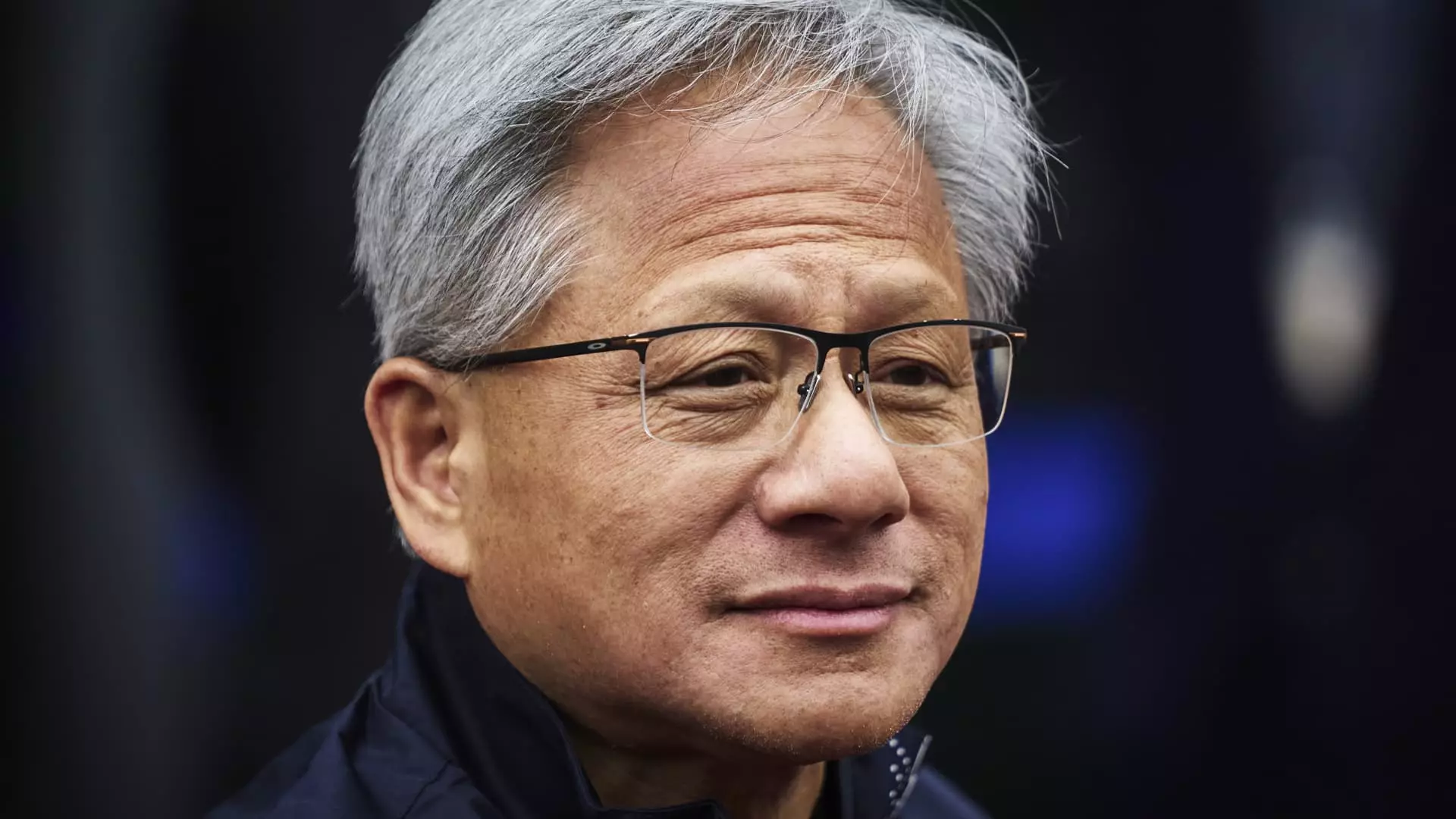The impending release of Nvidia’s fourth-quarter financial results marks a significant point for the company as it wraps up what has been deemed one of the most extraordinary growth trajectories in corporate history. The anticipated figures for the quarter ending in January suggest a staggering $38 billion in sales, representing a remarkable 72% increase compared to the previous year. This performance caps off a second consecutive fiscal year where Nvidia has more than doubled its sales, largely propelled by the widespread adoption of its graphics processing units (GPUs) in the burgeoning artificial intelligence (AI) sector. Yet, despite the impressive growth statistics, the company is facing a host of uncertainties as key investors begin to speculate on the future trajectory of demand for Nvidia’s products.
The AI Boom and Its Sustaining Force
Nvidia’s GPUs have become indispensable tools for companies developing AI applications, with notable projects like OpenAI’s ChatGPT showcasing the capabilities facilitated by these powerful chips. Over the past two years, Nvidia’s stock has surged an astonishing 478%, making it at times the most valuable company in the U.S., with a market capitalization exceeding $3 trillion. However, this meteoric rise has raised eyebrows amongst investors who are cautious about the sustainability of such rapid growth. Nvidia’s stock has stagnated in recent months, raising concerns that potential cutbacks from prominent clients could significantly impact revenue streams.
A pivotal aspect of Nvidia’s sales ecosystem is its reliance on a concentrated group of customers known as hyperscalers—large tech companies operating extensive data centers. This customer concentration creates vulnerability; reports indicate that a single entity accounted for nearly 19% of Nvidia’s total revenue, while its distribution among major clients shows a heavy reliance on companies like Microsoft, Google, Oracle, and Amazon. Given that hyperscalers have historically driven demand for server farms equipped with Nvidia’s GPUs, any signs of reduced spending by these giants could swiftly reflect on Nvidia’s financial health.
Market Sentiment and Investor Anxiety
Recently, analysts raised alarm bells when news broke that Microsoft appeared to be reevaluating its infrastructure spending. This raised fears about a potential slowdown in capital expenditures from cloud players, which has been a driving force in Nvidia’s sales. Reports of Microsoft canceling leases and scaling back on its international data center investments quickly translated into a 4% dip in Nvidia’s stock prices—an indicator of investor anxiety about the potential for a downturn in the AI hardware market.
In response, Microsoft reassured investors of its commitment to grow its infrastructure spending, projecting an ambitious $80 billion allocation for 2025. Despite this optimism, skepticism persists, especially when competitors like Alphabet, Meta, and Amazon also propose significant capital investment plans. Yet, analysts point out that half of the capital expenditures in the AI infrastructure domain often culminate in sales for Nvidia, reinforcing its dominant position in the market amid emerging competitive pressures from companies seeking to diversify their hardware sources.
The landscape for Nvidia is further complicated by the rise of competitors aimed at reducing their reliance on Nvidia’s products. Companies like AMD are exploring their own AI chip solutions, and new entrants such as Chinese startup DeepSeek have already disrupted the market with advanced, cost-effective AI models. The implications of DeepSeek’s more efficient approach suggest that the costly investments in Nvidia’s GPUs might not be as essential as previously thought for developing cutting-edge AI applications.
Nvidia is acutely aware of these market dynamics. CEO Jensen Huang has emphasized a unique perspective on the ongoing “scaling law,” which posits that AI models improve with increased data and computational resources. He argues that while initial AI training processes have required considerable GPU investments, the real future growth lies in the AI inference phase—where the models continuously generate outputs. This change in focus implies an ongoing need for Nvidia’s GPUs, albeit with a nuanced understanding of how and where they will be deployed.
As Nvidia gears up for its upcoming earnings report, the challenge will be articulating a clear path forward in addressing both demands for increased GPU capacity and the evolving landscape of AI technologies. Huang will need to reassure stakeholders not only of the company’s dominant position but of its adaptability in the face of emerging competition. The potential for market oversupply is a real concern; thus, Nvidia’s management must navigate these industry shifts while capitalizing on the undeniable opportunities that artificial intelligence continues to present.
As the company has consistently projected revenue growth, investors and analysts alike will be keen to understand how Nvidia plans to pivot in response to changing market conditions and potential disruptions from rivals. The outcome of this financial reporting may very well define Nvidia’s trajectory as it seeks to maintain its leadership in a continuously evolving technological landscape.

